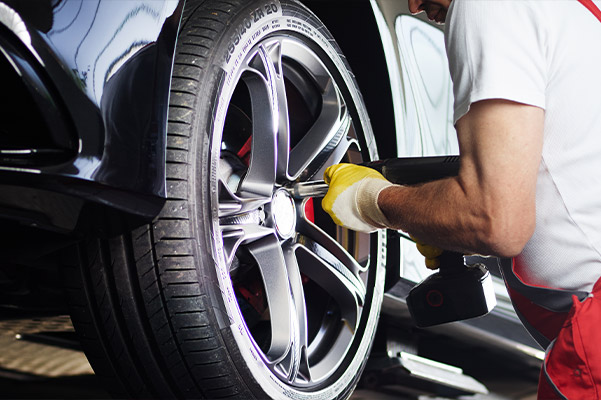Tire Repair Service Myths Debunked: Dividing Truth From Fiction
In the world of auto maintenance, tire repair work holds a considerable area, yet it is usually shrouded in misconceptions and misconceptions that can cause confusion for vehicle proprietors. Recognizing the distinction in between truth and fiction when it comes to tire repair work is crucial for guaranteeing both safety and cost-effectiveness. From the misconceptions surrounding patching versus connecting a pierced tire to the performance of various tire sealers, there are numerous essential areas where clearness is required to make educated choices. Allow's clarify some usual tire repair service myths and separate them from the truth to encourage you with the understanding required to navigate this vital facet of automobile upkeep.
Common Tire Repair Misconceptions
Dispelling common false impressions surrounding tire repair service is essential for preserving roadway safety and security and prolonging the durability of your car's tires. One common myth is the idea that a pierced tire is beyond repair work and has to be changed totally. In truth, lots of leaks can be properly repaired by a professional, complying with market requirements. It is important to understand that not all slits are produced equivalent; while some may undoubtedly require a tire replacement, the majority can be safely fixed.
An additional misunderstanding is the concept that a DIY tire repair package is an adequate solution for all tire concerns. While these kits can be handy for short-lived repairs in emergencies, they are not a long-term remedy and may not resolve the underlying problem (tire shop near me). Seeking the competence of a certified tire professional is always advised to make sure the safety and security and integrity of the tire

Can You Fix a Punctured Tire?
Fixing a punctured tire is a typical practice in the automotive industry, commonly lugged out by specialist service technicians complying with certain guidelines and standards. Punctures found on the step area of the tire are generally see this here repairable as long as they are within a specific size restriction and do not affect the tire's structural integrity.
It is necessary to note that penetrates near the sidewall or shoulder of the tire are generally not repairable as a result of safety problems. Such locations undergo substantial anxiety and flexing, making repair services unstable and potentially harmful. Additionally, if the leak is too huge, surpassing the recommended repairable dimension, or if the tire reveals indicators of interior damage, it is more secure to change the tire altogether.
The Fact Concerning Patching Vs. Plugging
When considering the repair of a punctured tire, recognizing the differences between patching and connecting is important for making notified decisions concerning tire maintenance and safety. Covering includes fixing the tire from the within, where a spot is used to cover the slit.
Misconception: All Tire Sealants Are Effective

When picking a tire sealer, take into consideration variables such as the size of punctures it can successfully fix, compatibility with tire pressure surveillance systems (TPMS), and whether it is secure for the tire material. Keep in mind, while tire sealers can be valuable in emergency situations, they are not an alternative for appropriate tire care and upkeep.
Ideal Practices for Handling Apartment Tires
Due to the differing performance of tire useful link sealers, understanding ideal techniques for dealing with blowouts is critical for keeping road safety and security and automobile performance. When encountering a puncture, the initial action is to safely pull over to the side of the roadway, far from oncoming traffic. Switch on threat lights to signal various other motorists of your situation. It is suggested to use the emergency brake and place wheel wedges under the tires to stop the automobile from rolling. Next, consult your vehicle's handbook to find the spare tire, jack, and lug wrench. Before trying to alter the tire, make certain that the location is flat and stable. Loosen up the lug nuts, elevate the car with the jack, eliminate the lug nuts and puncture, and replace it with the extra tire. Tighten up the lug nuts in a celebrity pattern, lower the lorry, and safely tighten the lug nuts. Lastly, stow away the flat tire, tools, and tools, and bear in mind to check the spare tire's stress periodically. Complying with these ideal practices can assist you manage flat tires effectively and securely.
Conclusion
To right here conclude, it is essential to different truth from fiction when it comes to tire repair myths. Understanding the truth regarding patching vs. connecting, the performance of tire sealants, and best techniques for dealing with flat tires can assist make certain the security and durability of your tires. By disproving common mistaken beliefs and adhering to appropriate repair service guidelines, you can make educated decisions when it involves maintaining the health and wellness of your automobile's tires.